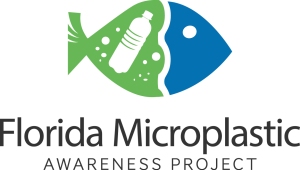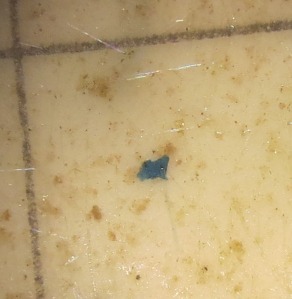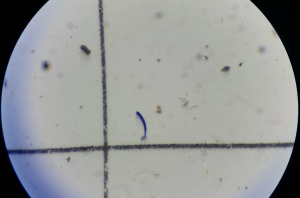
This is what we know about microplastics right now:
- Microplastics are generally defined as plastics that are LESS THAN 5mm in size
- There are two categories of microplastics, primary and secondary. Primary microplastics were originially created to be tiny pieces of plastic. They include industrial scrubbers used in abrasive blast cleaning, nurdles (little balls in beanie babies and the like) and microbeads ( beads in facewash, soap, etc.). These plastics float so they are not typically removed by wastewater treatment plants which are designed to remove solids by allowing them to settle. Secondary microplastics are small pieces resulting from the degradation of larger plastic items. EVERY PIECE OF PLASTIC EVER MADE STILL EXISTS SOMEWHERE.
- They are in our environment and MICROPLASTICS NEVER BIODEGRADE
- Microplastics can contain TOXINS
- Microplastics can become an ATTACHMENT SITE FOR TOXINS
- Microplastics are CONSUMED BY MARINE LIFE. Check out this video!
Some numbers we know:
- In 1999, plastic measured in an ocean gyre outweighed zooplankton by 6:1. By 2008, the ratio in the same gyre was 45:1!!
- In 2010, enough plastic entered the ocean globally to fill 5 grocery bags for every foot of shoreline of the 192 countries studied!!!
- 8 trillion microbeads estimated to enter waters in the US daily !!!
There is much that we do not (yet) know about the impacts of plastics in the environment. Hopefully research over the next several years will help answer some of these questions. Several studies (generally looking at individual species of marine organisms) show that filter feeders can remove microplastics from the water. However, what happens next is not understood. One study published in 2014 shows that it is possible for microplastics to be passed from predator to prey (in a lab setting), another study indicates that chemicals that are sorbed to the surface of plastics could leach into tissues of marine worms if those plastics become incorporated into the benthos. Probably the biggest unknown is that of human health risks.
MarineLab recently became a regional coordinator for the Florida Microplastic Awareness Project (FMAP). Read about the project and how you can get involved here. We are busy sampling our waters to count microplastics and determine the greatest source of microplastics in our waters. This information will aid in the current research of all of the microplastic unknowns.
Now, what can YOU do to help???
- Participate in MarineLab’s microplastic lab when your school visits MarineLab. You will collect samples, anylyze the sample’s following FMAP protocols and your data will be entered into the FMAP database.
- Reduce, Reuse, Recycle and REFUSE (find plastics that you can JUST SAY NO to i.e. straws, microbeads, etc.) You can do it!
- Participate in coastal cleanups. If you are in South Florida, check MarineLab’s facebook page for opportunities to come down and help us.
- Check labels on personal care products. Look at the ingredients. Don’t buy personal care products with POLYETHYLENE! Refer to this site for products with polyethylene.
- Sign Florida Microplastic Awareness Project pledge.
Teuten et al. 2007. Potential for plastics to transport hydrophobic contaminants. Environ. Sci. Technol. 41: 7759-7764
Setala et al. 2014. Ingestion and transfer of microplastics in the planktonic food web. Environmental Pollution 185: 77-83


Leave a comment